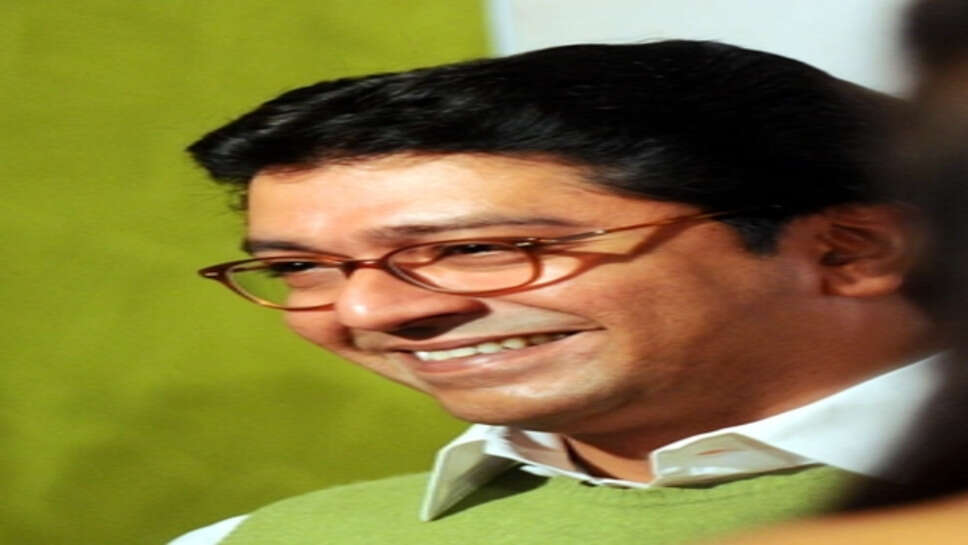Thackeray-Fadnavis Meeting Ignites Political Frenzy in Maharashtra

A quiet political manoeuvre has emerged as one of the most electrifying developments in Maharashtra’s ever-volatile political theatre: the much-talked-about meeting between Raj Thackeray, the outspoken chief of the Maharashtra Navnirman Sena (MNS), and Devendra Fadnavis, the formidable leader of the Bharatiya Janata Party (BJP) and former chief minister. With the upcoming assembly elections just around the corner, this rendezvous has sparked a flurry of speculation, enthusiasm, and strategic recalculation across party lines—and rightfully so.
A New Political Equation
Raj Thackeray, known for his fiery oratory and staunch pro-Marathi stance, has never been one to fade into the background. His party, MNS, has fluctuated between moments of political significance and relative obscurity. But this meeting with Fadnavis signals something far more consequential: a possible recalibration of regional power dynamics.
From one angle, the meet can be seen as a vote of confidence for Raj’s resurgent relevance. The fact that Fadnavis, a heavyweight in both Maharashtra and national politics, took the time to meet him suggests that MNS still commands both strategic importance and public appeal. Whether this encounter leads to formal pre-poll cooperation or seat-sharing remains unclear, but its mere occurrence has opened up a game of political chess with multiple pieces now in motion.
Calculating the Math: Vote Shares and Margins
To make sense of the buzz, we need to look at the numbers:
-
Marathi Identity Votes: MNS draws a significant chunk of votes by emphasising Marathi pride, regional development, and protection of local employment. BJP’s appeal in urban Maharashtra, especially in Mumbai and Pune, overlaps with the same voter base, but MNS taps into deeper cultural sentiments that can’t be overlooked.
-
Edge in Semi-Urban and Rural Seats: While BJP traditionally dominates in semi-urban and rural regions, MNS pockets can tilt closely fought seats. A united front could help BJP plug a few margin seats.
-
Factional Contest in Mumbai: Mumbai’s political arena is intensely competitive. Shiv Sena (whether under Uddhav or Eknath Shinde) has long held the city, but MNS often challenges that hegemony. A joint or cooperative effort could shift seats in several constituencies currently outside BJP’s grasp.
Tactical Unity: Friend or Foe?
This rendezvous leaves several questions hanging in the political humid air of Maharashtra:
-
Is seat-sharing on the cards? The most immediate question is whether both parties will dispense with contesting the same seats. If Raj Thackeray’s MNS withdraws from urban strongholds like Mulund or Borivali in return for BJP support in semi-urban pockets, the alliance could be transformative.
-
Legitimising MNS’s Comeback: If BJP acknowledges MNS as a legitimate pre-poll ally, it gives Raj newfound credibility. This may invigorate MNS cadres, youth wings, and wider support bases.
-
Shared Populist Plays: Both leaders share populist credentials—an underdog narrative, regional pride, promises of local job protection. Their convergence could crystallise a powerful campaign strategy.
Fadnavis's Calculated Move
For Devendra Fadnavis, the meeting isn’t merely a gesture—it’s a calculated political play. He recognises Maharashtra's rapidly evolving electoral terrain:
-
Countering the Sena Factor: The Shiv Sena’s disenchantment and split have left space for aggressive regional contenders. BJP may be hedging bets, absorbing distinctively Marathi sentiments through MNS strategic tie-ups.
-
Neutralising Opposition Quota: Congress and NCP (or their alliance variants) bank heavily on anti-BJP narratives. By opening overtures to MNS, BJP signals they’re not alienating Marathi identity, diluting a key ammo of the opposition.
-
Urban Agenda Consolidation: Mumbai and Pune’s electorates are fragmented. If BJP and MNS can neatly delineate seats and support bases, they may jointly govern the urban agenda without cross-party friction.
MNS's Strategic Moment
From Raj Thackeray’s standpoint, this is high-stakes politics at its boldest. MNS has always prided itself on being a distinctive regional voice, but it has lacked electoral consistency. This meet offers:
-
Renewed Political Relevance: A formal or tacit understanding with BJP elevates MNS from fringe voice to relative mainstream co-strategist. It energises the party and its voter base.
-
Negotiating Power: Even if a seat deal doesn’t materialise, just the symbol of a meeting gives MNS leverage in constituencies—evoking both curiosity and voter introspection.
-
Testing Electoral Waters: Should MNS choose to spearhead campaigns in targeted seats while sharing non-competing BJP turf, they test their vote-share potential without diluting their identity markers.
Implications for Maharashtra’s Critics
The meeting doesn’t just send ripples—it sends shockwaves. Political observers, critics, and rivals have begun rethinking old certainties:
-
Shiv Sena Variants: Be it Uddhav Thackeray or Eknath Shinde, the Sena factions now face direct competition from Raj’s MNS in the regional-cum-Marathi tick-box space. Their rhetoric may turn sharper, their alliances more urgent.
-
Congress-NCP: A revived BJP-MNS understanding could upstage Congress-NCP’s strongholds in certain seats. They may need to craft counter-branding or coopt MNS-fighting rallies.
-
Smaller Regional Forces: Parties like Vanchit Bahujan Aghadi, RPI, and others often explore post-poll arrangements—any formalisation of BJP-MNS unity may limit their own negotiation leverage.
Media Spin and Election Narrative
The optics of this encounter matter as much as the strategies:
-
Mumbai Metro Coverage: Visuals of Raj and Fadnavis shaking hands in Mumbai, with gleaming skyscrapers in the backdrop, stir both optimism and critique. Headlines diagnosing a “new axis” drive political conversation.
-
Social Media Amplification: MNS supporters and BJP loyalists flooded Twitter and WhatsApp with breakdowns of possible seat distributions, scotch-cartoon graphics of “Mathu-Bhai ki Jodi”, and meme wars mocking opposition parties.
-
Echo Effects in Campaign Slogans: BJP candidates across Maharashtra have begun referencing Marathi identity and local empowerment with even more emphasis. MNS’s “rough and tough” backdrop provides a fresh spin for manifesto themes.
The Road Ahead: Pre-Poll or Post-Poll Pact?
As we approach the election date, several scenarios are visible:
-
Formal Pre-Poll Coalition: BJP and MNS announce a seat-sharing arrangement, accompanied by joint campaign rallies, shared manifesto points, and directed mobilisation.
-
Tacit Understanding: Without formal proclamations, both parties avoid contesting each other’s core areas, but run as allies in practice.
-
Post-Poll Realignment: Both parties sport strong results; later, MNS joins the BJP-led government to enjoy ministerial positions or policy concessions.
Each scenario carries electoral consequences that will only fully emerge as candidate lists are filed and campaigns begin.
Why the Meeting Matters
A single handshake between Raj and Fadnavis is far more than a photo op—it’s a barometer of shifting regional politics:
-
Recasting Marathi Identity: A BJP-MNS engagement softens the notion that BJP alienates local cultures and languages.
-
Strategic Betting in Seat Margins: Targeting narrow-win seats means even a few thousand votes make a difference. Raj’s vote pool could be decisive.
-
Framing Governance Narrative: With Maharashtra facing issues like civic infrastructure, agricultural distress, and urban congestion, the alliance can promise a dual-capacity governance model—national party muscle and regional sensibilities.
Why does everyone suddenly want Raj Thackeray at the political table? Because his new, unprecedented alignments—especially with Fadnavis—embody strategic potency amidst an unpredictable electoral mood in Maharashtra. Regional pride is back in play. Vote bisons are on the move. From the city centres to semi-urban towns, this alliance speaks to identity politics, pragmatic engineering, and the constant, compelling drama of Indian democracy.
As voters wait for candidate lists, campaign promises, and the tussle of alliances, this meeting will linger prominently in political memory. If the BJP-MNS duo finalises a seat-sharing deal—or even if they merely whisper of coordination—they will redefine the contours of the Maharashtra election. And if they stay locked out of each other’s ambit, the after-effects of their rendezvous may still reverberate through campaign narratives and voter imagination alike.
